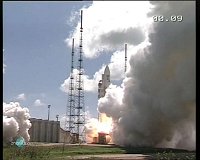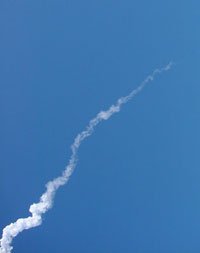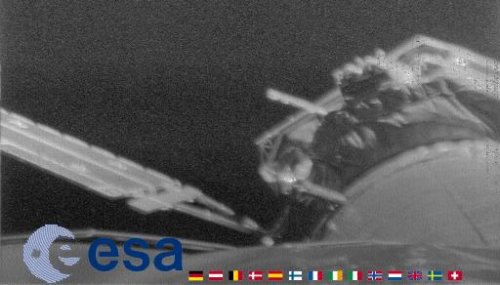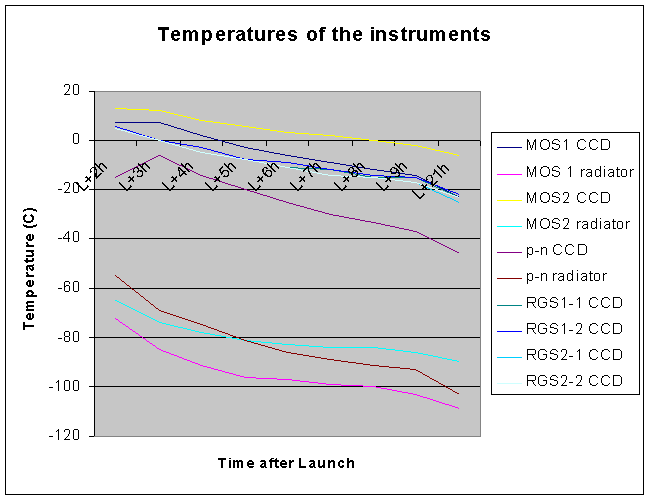 XMM has been launched on 10 December 1999, 15.32h Paris time. Post-launch data
showed that XMM was injected into an orbit very close to specifications, with
a perigee at 825.6 km and an apogee of 113,946 km.
XMM has been launched on 10 December 1999, 15.32h Paris time. Post-launch data
showed that XMM was injected into an orbit very close to specifications, with
a perigee at 825.6 km and an apogee of 113,946 km.| The launch of XMM-Newton by Ariane 504 |
 XMM has been launched on 10 December 1999, 15.32h Paris time. Post-launch data
showed that XMM was injected into an orbit very close to specifications, with
a perigee at 825.6 km and an apogee of 113,946 km.
XMM has been launched on 10 December 1999, 15.32h Paris time. Post-launch data
showed that XMM was injected into an orbit very close to specifications, with
a perigee at 825.6 km and an apogee of 113,946 km.
This extremely accurate injection reduces the propellant
needed to reach final orbit, leaving more propellant onboard
the satellite to extend its lifetime from the planned 10 years to
as much as 20 years, according to Robert Laine, XMM Mission
Manager at ESA.
 ESA's tracking station in Villafranca, Spain, locked onto the
Flight 119/AR 504 launcher's telemetry signal in its final boost
phase, and thus was able to acquire XMM immediately after its
separation from Ariane 5 some 2,500 km. above the Middle
East. Villafranca's data confirmed the scientific satellite was in
good shape before it passed below the horizon as viewed by the tracking
station.
ESA's tracking station in Villafranca, Spain, locked onto the
Flight 119/AR 504 launcher's telemetry signal in its final boost
phase, and thus was able to acquire XMM immediately after its
separation from Ariane 5 some 2,500 km. above the Middle
East. Villafranca's data confirmed the scientific satellite was in
good shape before it passed below the horizon as viewed by the tracking
station.
XMM was later acquired by a second tracking station in Perth, Australia.
 Click here to see the movie of the launch. It
is a very large file (1.3 MB), but it is worth it. You'll need Quicktime
version 3.0 or higher to see it.
Click here to see the movie of the launch. It
is a very large file (1.3 MB), but it is worth it. You'll need Quicktime
version 3.0 or higher to see it.
Data received by ground tracking stations showed at all stages worked as
planned, beginning with the main cryogenic stage and solid boosters,
followed by the storable propellant upper stage.
 Picture taken by XMM's FUGA camera showing
the telescope tube and one solar array on the left. At the top of the
picture, one sees the edges of the now deployed telescope sunshield. What
appears as a white boom in centre is in fact one of the fixed lateral
sunshield panels, seen side-on. 10 December 1999, 5 hours after launch.
Picture taken by XMM's FUGA camera showing
the telescope tube and one solar array on the left. At the top of the
picture, one sees the edges of the now deployed telescope sunshield. What
appears as a white boom in centre is in fact one of the fixed lateral
sunshield panels, seen side-on. 10 December 1999, 5 hours after launch.
Below you can see the how the temperatures of the detectors went down.
